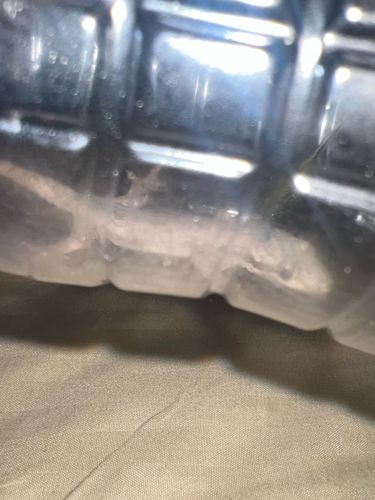Lizard (likely a gecko based on appearance)
Scientific Name: Too blurry to determine specific species, but likely from the suborder Gekkota
Order & Family: Squamata (Order), Gekkonidae (Family - common geckos) or other gecko families
Size: Highly variable depending on species. Small geckos can be a few centimeters long, while larger species can exceed 30 cm (12 inches). The individual in the image appears to be a smaller to medium-sized individual, possibly 5-15 cm.

Natural Habitat
Geckos are diverse and can be found in various habitats including deserts, rainforests, mountains, and often around human dwellings. Based on the image, if it's a house gecko, it would be found in urban and suburban areas, inside homes or on exterior walls.
Diet & Feeding
Mainly insectivorous, feeding on crickets, moths, spiders, and other small invertebrates. Some larger species may also eat small vertebrates or fruit.
Behavior Patterns
Many geckos are nocturnal, becoming active at night to hunt for insects. They are known for their vocalizations (chirping or clicking sounds) and their ability to climb smooth surfaces due to specialized toe pads with lamellae.
Risks & Benefits
Generally harmless to humans. They do not pose any significant risks; they are not venomous or aggressive. \"Benefits\" include natural pest control, as they eat various insects and spiders in and around homes.
Identified on: 9/27/2025